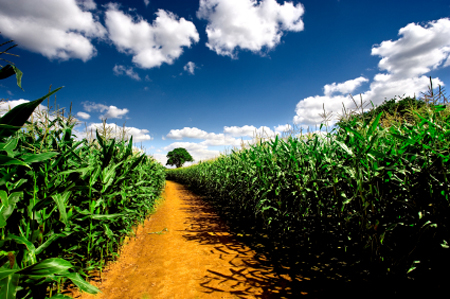 (Agrimoney) – Weather forecasts maintained hope for US corn production prospects as crops entered the key pollination period in historically strong condition, with soybeans and spring wheat seen thriving too.
(Agrimoney) – Weather forecasts maintained hope for US corn production prospects as crops entered the key pollination period in historically strong condition, with soybeans and spring wheat seen thriving too.
An outlook for temperatures to remain below average throughout the Midwest over the next 10 days “sets the stage for excellent pollination conditions”, said Paul Georgy, president of Chicago broker Allendale.
“If the forecast comes true it would make it the fourth coolest pollination period since 1980.
“This would put this year in the category with 2004 and 2009 when record yields were set in corn.”
US farmers achieved a corn yield of 160.3 bushels per acre in 2004, beating by a margin the previous record of 142.2 bushels per acre set the previous year, while in 2009 setting the current all-time high of 164.7 bushels per acre.
Cool conditions are beneficial to pollination, with heat and dryness hampering the process, as seen in 2012, when the yield fell to 123.4 bushels per acre, the lowest since 1995.
‘Bumper yield prospects’
At RJ O’ Brien, Richard Feltes also highlighted that the two-week outlook for Midwest temperatures was “not only cooler than last week’s models, but normal-to-below average through the peak of corn pollination in mid-July”.
He added: “US farmers, grown accustomed to sub-160 bushels per acre US corn yields in eight of the last 10 years, are unexpectedly faced with the prospect of a 170 bushels-per- acre 2014 US corn yield.”
The comments followed the release of data overnight showing that as of Sunday 15% of corn was silking, part of the pollination process, at a time when 75% of the crop was in “good” or “excellent” condition.
While unchanged on the week, that rating was the second best of the past 20 years for the time of year, beaten only by the 1999 figure.
‘High humidity was beneficial’
The increase reflected largely an improvement in southern growing states, such as Texas, where USDA scouts reports that “corn experienced rapid growth as a result of recent rainfall”, with 66% rated good or excellent, up 2 points week on week.
In Kansas, where “cooler temperatures prevailed and rain fell” last week in southern parts of the state last week, the proportion of corn rated good or excellent increased by 3 points to 58%.
“High humidity was beneficial for row crops,” scouts said.
Such improvements more than offset a 3-point decline to 76% in the proportion of crop in Iowa, the top corn and soybean growing state, viewed as in good or excellent health, with excessive rains impairing crop condition.
“Weed control and nitrogen side-dressing were behind due to wet conditions and the inability to get equipment through fields,” Iowa scouts said.
“Many producers reported yellowing corn and stress on soybeans due to excessive moisture.”
‘Spring wheat is flourishing’
Indeed, the proportion of Iowa soybeans rated good or excellent fell too, by 2 points to 73%, although this was, again, insufficient to offset improvements in other states, such as Kansas, Kentucky and Nebraska.
The rating of the national crop, steady at 72% good or excellent, is the best in 20 years for the time of year.
For spring wheat, the proportion seen as in good or excellent condition held at 70%, including 83% of the crop in North Dakota, the top growing state.
“Northern spring wheat is flourishing in a cool, rainy summer,” said Gail Martell at Martell Crop Projections.
“A favourable wheat harvest in North Dakota, if it occurs, would help offset losses in hard red winter wheat production, pegged down 25% below average.”
In fact, the condition rating of winter wheat improved 1 point to 31%.
However, with 57% of the crop now harvested – up 14 points week on week, but remaining 3 points behind the average –condition ratings for the crop are of decreasing importance.




